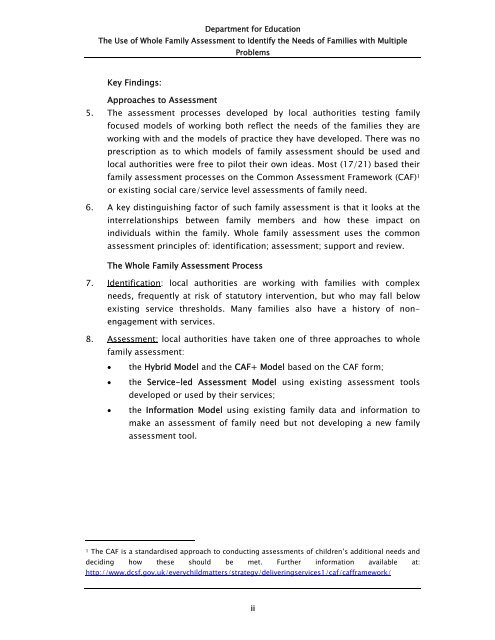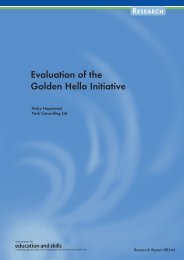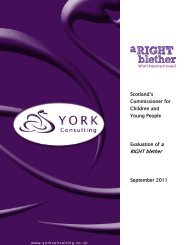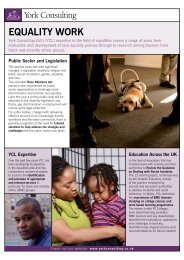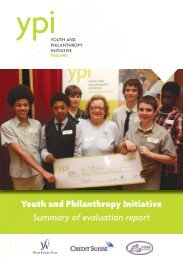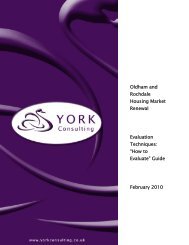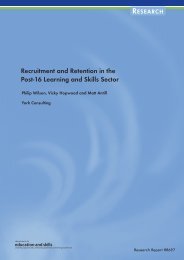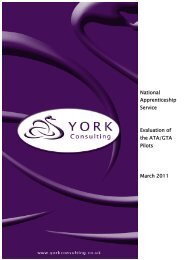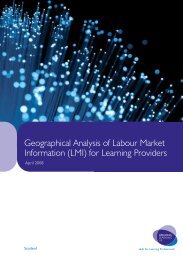The use of whole family assessment to identify the needs of families ...
The use of whole family assessment to identify the needs of families ...
The use of whole family assessment to identify the needs of families ...
Create successful ePaper yourself
Turn your PDF publications into a flip-book with our unique Google optimized e-Paper software.
Department for Education<strong>The</strong> Use <strong>of</strong> Whole Family Assessment <strong>to</strong> Identify <strong>the</strong> Needs <strong>of</strong> Families with MultipleProblemsKey Findings:Approaches <strong>to</strong> Assessment5. <strong>The</strong> <strong>assessment</strong> processes developed by local authorities testing <strong>family</strong>foc<strong>use</strong>d models <strong>of</strong> working both reflect <strong>the</strong> <strong>needs</strong> <strong>of</strong> <strong>the</strong> <strong>families</strong> <strong>the</strong>y areworking with and <strong>the</strong> models <strong>of</strong> practice <strong>the</strong>y have developed. <strong>The</strong>re was noprescription as <strong>to</strong> which models <strong>of</strong> <strong>family</strong> <strong>assessment</strong> should be <strong>use</strong>d andlocal authorities were free <strong>to</strong> pilot <strong>the</strong>ir own ideas. Most (17/21) based <strong>the</strong>ir<strong>family</strong> <strong>assessment</strong> processes on <strong>the</strong> Common Assessment Framework (CAF) 1or existing social care/service level <strong>assessment</strong>s <strong>of</strong> <strong>family</strong> need.6. A key distinguishing fac<strong>to</strong>r <strong>of</strong> such <strong>family</strong> <strong>assessment</strong> is that it looks at <strong>the</strong>interrelationships between <strong>family</strong> members and how <strong>the</strong>se impact onindividuals within <strong>the</strong> <strong>family</strong>. Whole <strong>family</strong> <strong>assessment</strong> <strong>use</strong>s <strong>the</strong> common<strong>assessment</strong> principles <strong>of</strong>: identification; <strong>assessment</strong>; support and review.<strong>The</strong> Whole Family Assessment Process7. Identification: local authorities are working with <strong>families</strong> with complex<strong>needs</strong>, frequently at risk <strong>of</strong> statu<strong>to</strong>ry intervention, but who may fall belowexisting service thresholds. Many <strong>families</strong> also have a his<strong>to</strong>ry <strong>of</strong> nonengagementwith services.8. Assessment: local authorities have taken one <strong>of</strong> three approaches <strong>to</strong> <strong>whole</strong><strong>family</strong> <strong>assessment</strong>: <strong>the</strong> Hybrid Model and <strong>the</strong> CAF+ Model based on <strong>the</strong> CAF form;<strong>the</strong> Service-led Assessment Model using existing <strong>assessment</strong> <strong>to</strong>olsdeveloped or <strong>use</strong>d by <strong>the</strong>ir services;<strong>the</strong> Information Model using existing <strong>family</strong> data and information <strong>to</strong>make an <strong>assessment</strong> <strong>of</strong> <strong>family</strong> need but not developing a new <strong>family</strong><strong>assessment</strong> <strong>to</strong>ol.1 <strong>The</strong> CAF is a standardised approach <strong>to</strong> conducting <strong>assessment</strong>s <strong>of</strong> children’s additional <strong>needs</strong> anddeciding how <strong>the</strong>se should be met. Fur<strong>the</strong>r information available at:http://www.dcsf.gov.uk/everychildmatters/strategy/deliveringservices1/caf/cafframework/ii


